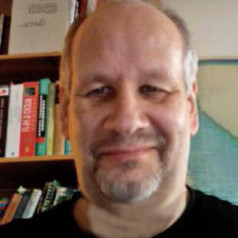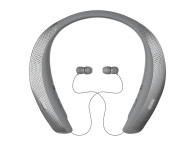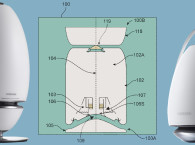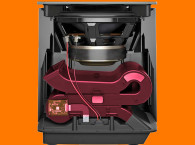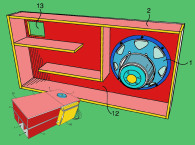Acoustic Device
Patent Application Publication Number: 2016/0021446
Inventors: Roman N. Litovsky (Newton, MA); Bojan Rip (Newton, MA); Joseph M. Geiger (Clinton, MA); Chester Smith Williams (Lexington, MA); and Pelham Norville (Framingham, MA)
Assignee: Bose Corp.
Filed: September 17, 2015
Class: 381/338
Published: January 21, 2016
Number of Claims: 20
Number of Drawings: 12
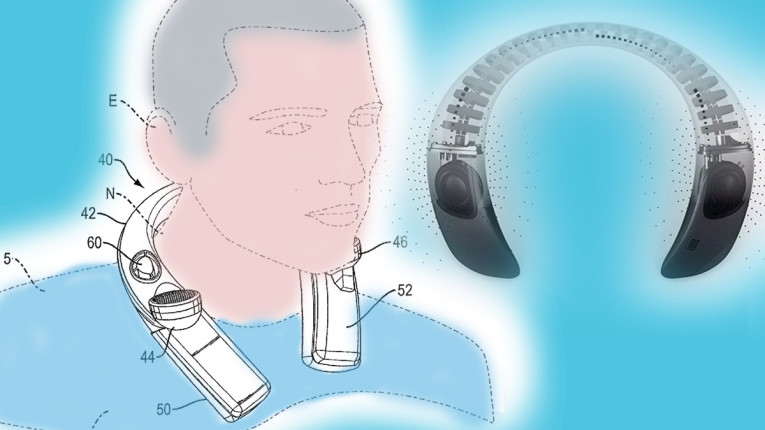
Abstract from Patent
An acoustic device having a neck loop that is constructed and arranged to be worn around the neck. The neck loop includes housing that defines an acoustic volume, a first acoustic driver located at a first distal end of the housing and acoustically coupled to the housing, and a second acoustic driver located at a second distal end of the housing, opposite the first distal end and acoustically coupled to the housing.
Independent Claims
1. An acoustic device, comprising: a neck loop that is constructed and arranged to be worn around the neck of a user, the neck loop comprising a housing that defines an acoustic volume; a first acoustic driver located at a first distal end of the housing and acoustically coupled to the housing; and a second acoustic driver located at a second distal end of the housing, opposite the first distal end and acoustically coupled to the housing.
16. An acoustic device, comprising: a neck loop that is constructed and arranged to be worn around the neck of a user, the neck loop comprising a housing that comprises a first acoustic waveguide having a first sound outlet opening, and a second acoustic waveguide having a second sound outlet opening; a first open-backed acoustic driver acoustically coupled to the first waveguide, where the first open-backed acoustic driver is carried by the housing and has a first sound axis that is pointed generally at the expected location of one ear of the user; a second open-backed acoustic driver acoustically coupled to the second waveguide, where the second open-backed acoustic driver is carried by the housing and has a second sound axis that is pointed generally at the expected location of the other ear of the user; and a retention member extending from the housing of the neck loop, the retention member being sized and configured to contact the neck of the user and further stabilize the acoustic device; wherein the first sound outlet opening is located proximate to the second acoustic driver and the second sound outlet opening is located proximate to the first acoustic driver; and wherein the first and second acoustic drivers are driven such that they radiate sound that is out of phase.
20. An acoustic device, comprising: a neck loop that is constructed and arranged to be worn around the neck, the neck loop comprising a housing that comprises a first acoustic waveguide having a first sound outlet opening, and a second acoustic waveguide having a second sound outlet opening, wherein the waveguides are both defined by the exterior wall of the housing and an interior wall of the housing, and wherein the interior wall of the housing lies along a longitudinal axis that is twisted 180° along its length, wherein the neck loop is generally “U”-shaped with a central portion and first and second leg portions that depend from the central portion and that have distal ends that are spaced apart to define an open end of the neck loop, wherein the twist in the housing interior wall is located in the central portion of the neck loop, wherein the housing has a top portion that is closest to the ears when worn by the user and a bottom portion that is closest to the torso when worn by the user, and wherein each waveguide lies in part in the top portion of the housing and in part in the bottom portion of the housing, the neck loop further comprising a retention member sized and configured to contact the neck of the user and further stabilize the acoustic device; a first open-backed acoustic driver acoustically coupled to the first waveguide, where the first open-backed acoustic driver is located in the first leg portion of the neck loop and has a first sound axis that is pointed generally at the expected location of one ear of the user; a second open-backed acoustic driver acoustically coupled to the second waveguide, where the second open-backed acoustic driver is located in the second leg portion of the neck loop and has a second sound axis that is pointed generally at the expected location of the other ear of the user; wherein the first and second acoustic drivers are driven such that they radiate sound that is out of phase; wherein the first sound outlet opening is located proximate to the second acoustic driver and the second sound outlet opening is located proximate to the first acoustic driver; and wherein the first waveguide begins underneath the first acoustic driver, extends along the top portion of the housing to the distal end of the first leg portion of the neck loop where it turns to the bottom portion of the housing and extends along the first leg portion into the central portion of the neck loop where it turns to the top portion of the housing and extends into the second leg portion to the first sound outlet opening; and wherein the second waveguide begins underneath the second acoustic driver, extends along the top portion of the housing to the distal end of the second leg portion of the neck loop where it turns to the bottom portion of the housing and extends along the second leg portion into the central portion of the neck loop where it turns to the top portion of the housing and extends into the first leg portion to the second sound outlet opening.
Reviewer Comments
The disclosed invention includes a wearable acoustic device that directs sound to each ear without requiring acoustic drivers on, over, or in the ears. The device is configured to be worn around the neck. It has a “neck loop” with housing, such that the neck loop may have a horseshoe-like, or a “U” shape, with two legs that sit generally over each clavicle, and a curved central portion that sits behind the neck. The device has two open-back electro-acoustic drivers—one on each leg of the housing. The drivers are located, one each, below the left and right ears of the user, with each driver’s acoustic axis directed at the closest ear.
The system includes two waveguides within the housing, each one having an exit below an ear, close to a driver. The rear side of the first driver is acoustically coupled to the entrance of the first waveguide and the rear side of the second driver is acoustically coupled to the entrance of the second waveguide. Each waveguide has one closed-end acoustically coupled to the rear wave of the driver that feeds it, located below one ear, and the other end (the open end) located below the opposite ear of the driver that feeds it, respectively.
The first sound outlet opening (driven by the first driver) is located proximate to the second acoustic driver and the second sound outlet opening (driven by the second driver) is located proximate to the first acoustic driver. Each waveguide has one end with its corresponding acoustic driver located at one side of the head and in proximity to and below the adjacent ear, and another end that leads to its sound outlet opening, located at the other side of the head and in proximity to and below the other, adjacent ear.
The waveguides are specified to have consistent cross-sectional area along their length. With the drivers having their acoustic axes pointed at the expected locations of the ears, each driver should be about 10 cm from the expected location of the nearest ear, and about 26 cm from the expected location of the other ear. (This distance is measured with a flexible tape running under the chin up to the most distant ear.) The lateral distance between the drivers is about 15.5 cm. This arrangement results in a sound pressure level (SPL) from a driver about three times greater at the closer ear than the other ear, maintaining reasonable channel separation.
In the preferred example, the length of each waveguide is approximately 43 cm, resulting in a quarter wave pipe resonant frequency of about 200 Hz.
While this general type of structure has been developed before, the Bose system of this review has an additional novel aspect that is very interesting.
The first and second acoustic drivers are driven such that they radiate sound that is out of phase, over a portion of the audible spectrum. Due to the arrangement of the drivers and waveguides, with each ear directly receiving acoustic output from the front of one driver and output from the back of the other driver, if the drivers are driven out of phase, the two acoustic signals received by each ear are substantially in phase below the fundamental waveguide quarter wave resonance frequency, which in a the representative example is about 200 Hz.
This out-phasing below 200 Hz ensures that low-frequency radiation from each driver, and the same side corresponding waveguide outlet, are in phase and do not cancel each other. This provides the rather impressive result of the low-frequency bandwidth extending approximately two octaves below the normal (in-phase) cutoff frequency of the quarter wave tuned pipe. In this example, the increased, nearfield, output of the out-of-phase system is more than +15 dB in the range of 50 to 70 Hz, as compared to in-phase operation. Above 200 Hz where the acoustic phases rotate 180°, the system phase relationship between the two channels is rotated 180° to maintain normal, in-phase acoustical summing for all upper range frequencies.
While this provides impressive extension in low-frequency capability of the system in the nearfield, an additional positive attribute is realized from this approach. Since, at low frequencies, the radiation from opposite side drivers and corresponding waveguides are out of phase, the system provides far-field cancellation. This attenuates the low frequencies at locations away from the listener, reducing noise pollutions to others who are nearby, at least partially mimicking the low-frequency isolation of headphone listening. It is interesting that the arrangement that provides low-frequency noise cancellation in the far field is the same arrangement that extends low-frequency response in the nearfield.
The invention’s patent shows a frequency response measurement of two different curves. One curve shows the drivers driven out of phase and the other with the drivers driven in-phase. Below about 150 Hz, the out-of-phase SPL is higher than for in-phase driving. The benefit of out-of-phase driving shows +15 dB at the lowest frequencies of 60 to 70 Hz. Due to the nature of the resonant pipe/waveguide system, the same effect of increased output takes place in the frequency range from approximately 400 to 950 Hz. In the frequency range 150 to 400 Hz, “in-phase” SPL is higher than out-of-phase SPL.
To obtain the best driver performance in the 150-to-400-Hz frequency range, the phase difference between left and right channels should be flipped back to zero. In one example, the phase differences between channels are accomplished using all pass filters having limited phase change slopes. These provide for gradual phase changes that may have a detrimental effect on sound reproduction. This phase adaptability allows for the benefits of proper phase selection while assuring power efficiency of the system across the frequency range. It is suggested that above 1 kHz, the phase differences between the left and right channels has much less influence on SPL (quantity) due to the lack of correlation between channels at higher frequencies.
But, one might question the effects on spatial “quality” of having the signals out of phase at higher frequencies, where it would be best to operate the system in phase and to apply an acoustical low pass filter to the waveguides to eliminate their interference.
One of the earliest developments of this type of neck/shoulder sound system was the Nortel SoundBeam Neckset. It was a remarkable system, similar in appearance to this invention’s systems , which are shown in Figure 1 and Figure 2. The SoundBeam Neckset was created by the brilliant Nortel acoustical research scientist Andre Van Schyndel and was a significant component in what was, at the time, an international study in advancing on-person computers and entertainments systems. The Van Schyndel device was unique in that it used a dual dipole (per channel) transducer arrangement to effectively, “beam” the sound to each ear, with high directivity, while at the same time creating the effect of attenuating the far field SPL vs. distance at a greater rate than the standard inverse-square-law, 6 dB per doubling of distance.
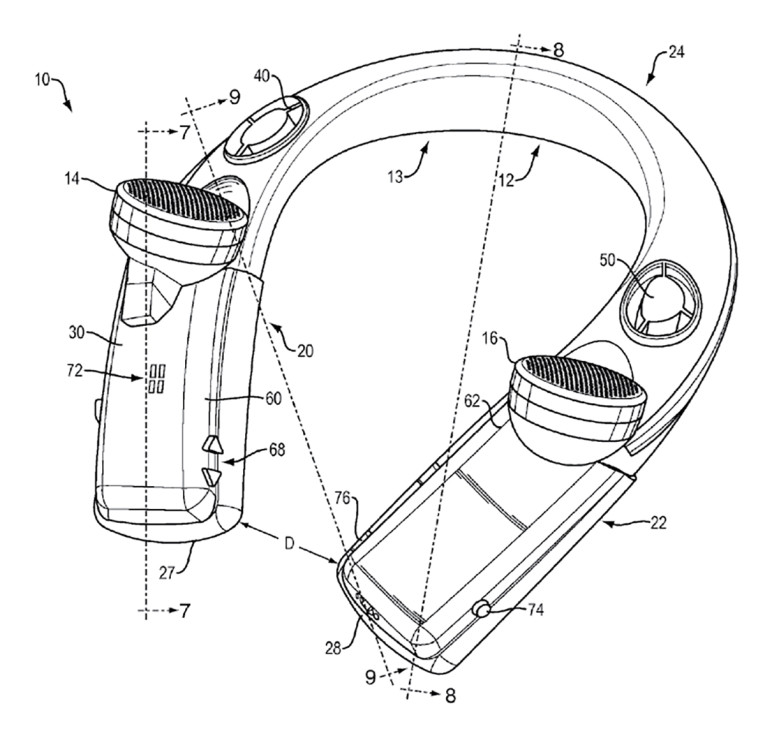
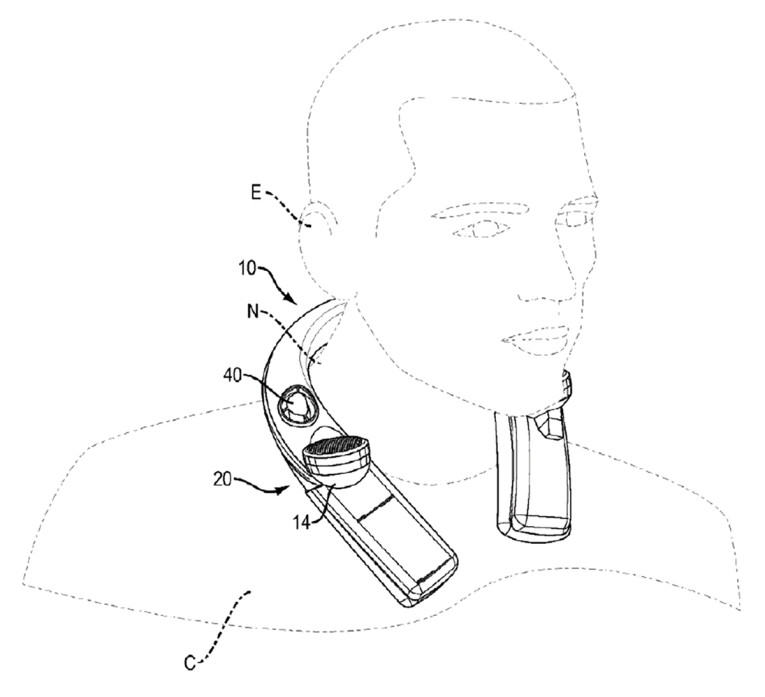
The Nortel device did not have particularly extended low-frequency capability, but was quite impressive at creating an isolated listening system with wideband elimination of noise pollution. Inspired by the Neckset’s apparent capabilities a similar shoulder/appellate system combined with a miniature “necklace cross coupled subwoofer” that provided wideband performance and spacious sound field while maintaining low impact relative to noise pollution was built.
These systems from more than 20 years ago were, unfortunately, developed well before iPods were ubiquitous and didn’t really have a market as they might today. It is surprising that it has taken this long, but having experienced the format, I believe that many serious listeners will find a high-quality version of a Neck/Shoulder type system to be a surprisingly enjoyable means of personal listening. Given that, we may find Bose introducing another product category very soon. VC
This article was originally published in Voice Coil, May 2016.


